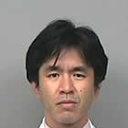[Pseudogout as a complication of stroke].
Palabras clave
Abstracto
We studied the incidence and clinical characteristics of pseudogout complicating stroke and the clinical characteristics of pseudogout occurring after stroke. Ten of 181 patients with stroke developed pseudogout. Compared with the patients of other disease, the incidence of pseudogout in the stroke patients was significantly high. Age at onset was 75 to 90, with a mean of 82. The time interval from stroke to onset of pseudogout ranged from 3 to 31 days, with a median of 5.5 days. The most common initial symptom was fever (90%), whereas subjective arthralgia was not highly frequent (50%). The affected joints were the knee in 6, wrist in 5, shoulder in 2, elbow in 2, atlantoaxial (crowned dens syndrom) in 2 and ankle in the remaining one. All patients developed pseudogout either on the paretic side or on atlantoaxial joint when their condition required extended bed-rest or limited their mobility. All the patients had elevated CRP levels (mean CRP 12.0 mg/dl). Our findings suggest that this underrecognized disease should be noted as one of the complications after stroke.


